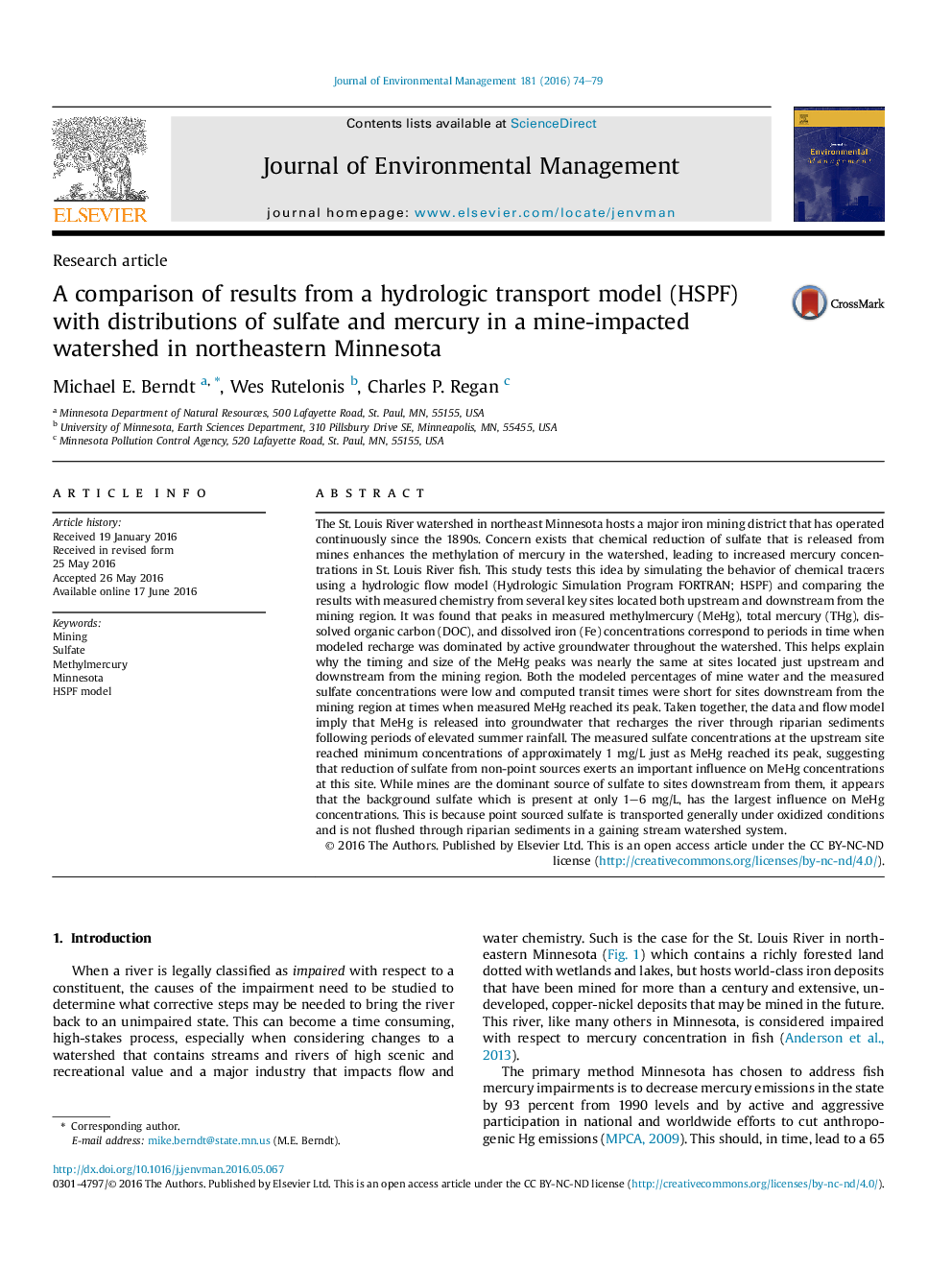| کد مقاله | کد نشریه | سال انتشار | مقاله انگلیسی | نسخه تمام متن |
|---|---|---|---|---|
| 7479408 | 1485231 | 2016 | 6 صفحه PDF | دانلود رایگان |
عنوان انگلیسی مقاله ISI
A comparison of results from a hydrologic transport model (HSPF) with distributions of sulfate and mercury in a mine-impacted watershed in northeastern Minnesota
دانلود مقاله + سفارش ترجمه
دانلود مقاله ISI انگلیسی
رایگان برای ایرانیان
کلمات کلیدی
موضوعات مرتبط
مهندسی و علوم پایه
مهندسی انرژی
انرژی های تجدید پذیر، توسعه پایدار و محیط زیست
پیش نمایش صفحه اول مقاله

چکیده انگلیسی
The St. Louis River watershed in northeast Minnesota hosts a major iron mining district that has operated continuously since the 1890s. Concern exists that chemical reduction of sulfate that is released from mines enhances the methylation of mercury in the watershed, leading to increased mercury concentrations in St. Louis River fish. This study tests this idea by simulating the behavior of chemical tracers using a hydrologic flow model (Hydrologic Simulation Program FORTRAN; HSPF) and comparing the results with measured chemistry from several key sites located both upstream and downstream from the mining region. It was found that peaks in measured methylmercury (MeHg), total mercury (THg), dissolved organic carbon (DOC), and dissolved iron (Fe) concentrations correspond to periods in time when modeled recharge was dominated by active groundwater throughout the watershed. This helps explain why the timing and size of the MeHg peaks was nearly the same at sites located just upstream and downstream from the mining region. Both the modeled percentages of mine water and the measured sulfate concentrations were low and computed transit times were short for sites downstream from the mining region at times when measured MeHg reached its peak. Taken together, the data and flow model imply that MeHg is released into groundwater that recharges the river through riparian sediments following periods of elevated summer rainfall. The measured sulfate concentrations at the upstream site reached minimum concentrations of approximately 1Â mg/L just as MeHg reached its peak, suggesting that reduction of sulfate from non-point sources exerts an important influence on MeHg concentrations at this site. While mines are the dominant source of sulfate to sites downstream from them, it appears that the background sulfate which is present at only 1-6Â mg/L, has the largest influence on MeHg concentrations. This is because point sourced sulfate is transported generally under oxidized conditions and is not flushed through riparian sediments in a gaining stream watershed system.
ناشر
Database: Elsevier - ScienceDirect (ساینس دایرکت)
Journal: Journal of Environmental Management - Volume 181, 1 October 2016, Pages 74-79
Journal: Journal of Environmental Management - Volume 181, 1 October 2016, Pages 74-79
نویسندگان
Michael E. Berndt, Wes Rutelonis, Charles P. Regan,